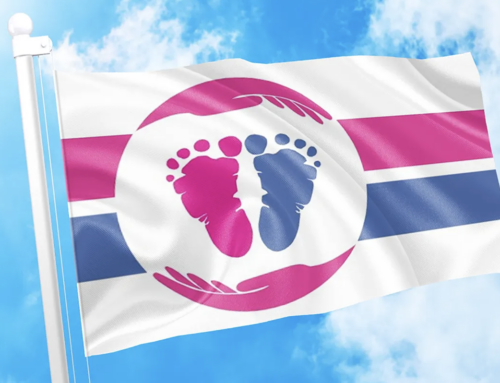Some fetal models show twins lying the same way in the uterus, but others show them top to tail. Which is correct? How do we know? M.S., Ottawa
There are a number of ways of telling which way a preborn baby is oriented e.g., ultrasound gives a picture, and fetal electrocardiography indicates which way the child is lying. Doctors who treat the preborn child must be able to locate their patient, and the baby does not always co-operate. He does not stay put, especially in the early stages when there is more room to move around. Sir William Liley, the Father of Fetology, said that you could see the babies doing cartwheels, “double flips in two-and-a-half-seconds.”
As babies get bigger they have less room to move around, and twins are even more crowded. When the space gets tight, each twin must find the most comfortable position, and that could mean that twins could both lie in the same direction, or head to toe. Both fetal models are correct – for some twins. To be completely accurate, I suppose, both models – as “either or” – are needed.
At the Toronto C.L.C. conference I heard Dr. Nathanson describe how babies can be removed from the mother’s uterus, be operated on, and then replaced. I have wanted to know how they experiment and practice this. D.B., New Westminister
This question prompted me to look up some evidence given in 1983 by Sir William Liley at the Borowski Trial in Regina. He described some of the experimental work which they had done in New Zealand in treating unborn lambs by surgery, outside the mother’s uterus. “This has permitted us by the procedure of hysterotomy, to remove a lamb from the uterus, temporarily interrupt its umbilical circulation, temporarily ventilate or respire the baby lamb (doing its breathing for it), while we carried out surgical procedures…and the baby could be rejoined to its placental circulation, respiration desisted, and the baby placed back in the uterus for pregnancy to continue…by legal definition the lamb had already been born.
The umbilical cord cut – deliberately – and rejoined. At the time, in 1983, there were already attempts to treat preborn children at least partially out of the womb, but “these procedures have been defeated by eventual premature labour.” The problem of preventing premature labour involved many branches of the medical profession, in physiology, biochemistry and fetology. Less than a decade later babies were being surgically treated, outside the womb, and being replaced to wait for their proper birthdays.
What causes an ectopic pregnancy in the Fallopian tube? O.T., Hamilton.
During the first days after conception, the fertilized ovum travels along the Fallopian tube towards the uterus. At this time it is enclosed in a shell or capsule (the zona pellucida) which prevents it from sticking. About the sixth day after fertilization the outer covering begins to disintegrate, and at that stage the group of cells is very tacky, and it sticks wherever it happens to be. It is at this point that the fertilized ovum (now called the blastocyst) begins to implant itself, and form the placenta.
Why does this happen sometimes in the tube and not in the uterus? There may be delays along the tube; the Fallopian tube may have abnormalities which partly or completely block the way; the zona pellucida may disintegrate too quickly.
The two major causes of blocked or damaged Fallopian tubes are sexually transmitted diseases (STDs), and abortion. It is estimated that sixty per cent of ectopic pregnancies are caused by STDs, principally Chlamydia and gonorrhea. The change in the abortion law in 1969 and the sexual revolution have resulted in an alarming increase in ectopic pregnancies. Canadian statistics show that, proportional to the total number of pregnancies, ectopic pregnancies more than doubled between 1975 to 1985 and are still rising rapidly. Every ectopic pregnancy is fatal for the preborn child, and life threatening for the mother unless treated quickly.
When pro-abortionists talk of removing the products of conception, isn’t that just the baby? One of them said I was wrong. M. McC., Toronto.
The “products of conception” that the abortionist removes includes ‘the fetal parts’ (this means the arms, legs, head and torso of the preborn child) and the placenta. The placenta, which is made by the developing new, tiny human, is its contact and life line with the mother and it belongs to the baby. It, too, is removed with the body of the child.



